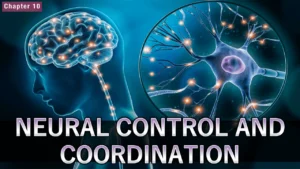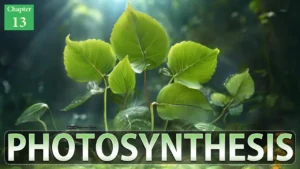Table of Contents
Aves General Characteristics, Classification and Examples
After reading this article you will learn about Aves General Characteristics, Classification and Examples
Aves General Characteristics
- All types of birds are included in this class
- Body is boat shaped. It is divided into head, neck, trunk and tail
- Warm blooded or homeotherms
- Exoskeleton is made up of feathers, scales, claws on legs and beak
- Limbs are two pairs, fore limbs are modified into wings for flying and hind limbs are modified for walking, running, swimming and perching
- Skin dry without glands, only preen gland is present at the base of tail
- Bones are pneumatic or hollow and have no bone marrow
- Digestive system has additional chambers, the crop and gizzard. Oesophagus is modified into crop for quick food ingestion and storage and gizzard for crushing the food which is swallowed unmasticated.
- Respiration by lungs, air sacs are also found
- Sound producing organ at the junction of trachea is called syrinx
- Excretion uricotelic and urinary bladder absent. cloaca present
- Brain is large and highly developed. cranial nerves are 12 pairs
- Unisexual, sexual dimorphism present and oviparous.
- Copulatory organ absent in males. In female left ovary is well developed
- Eggs are megalacithal and cleidoic.
- All the birds form nest. migration and parental care is well marked.
Classification of Aves
The class Aves is divided into two Subclass: Archiornithes and Neornithes
Subclass 1. Archiornithes
- It includes extinct birds
- The beak was well-developed. Teeth are present in jaw of skull
- Wings ill developed
- Bones non pneumatic
- There were present 3 clawed digits of forelimb at free edges of wings
- They were having long feathered tail
- They are considered as connecting link between reptiles and birds
- This subclass has include only one order called Archaeopterygiformes
Order – Archaeopterygiformes
So far two genera have been described, each with a single species from the upper Jurassic lime stones of Solenhofen in Bavaria.
- Forelimbs bear remiges.
- Tail long with many vertebrae, which gradually taper to the distal end. The rectrices are arranged in two lateral rows on each side of the caudal vertebrae.
- The carpals and metacarpals free and hand with three clawed digits.
- The eyes were large.
- The skull proportionately large, with a rounded bird-like brain case and strong jaws, in each of which hearing a series of conical teeth lodged in socket.
- Enamelled crowned teeth on both the jaws.
- The sacrum made up of only about six vertebrae.
- The cervical and thoracic ribs probably devoid of uncinates. Thin abdominal ribs or gastralia or so-called ventral ribs were on ventral wall of abdomen.
- The cerebral hemispheres smooth, long and narrow and cerebellum small.
- Examples: Archaeopteryx lithographica, Archaeornis siemensi.
Subclass 2. Neornithes
- Includes live and extinct birds
- Wings well developed
- Bones pneumatic
- Toothless beak
- Tail small and claws absent on forelimbs
- This subclass divided into 4 superorder:- Odontognathae, Palaeognathae, Impennae and Neognathae
Superorder 1. Odontognathae
- New World toothed birds found in Upper Cretaceous period.
- Clavicle not fused. Sternum without keel. Wing of vestigeal humerus only.
- Both the jaws were with teeth.
- Flightless, specialised for swimming, about 150 cm in length.
- Examples: Hesperornis, Hargeria, Ichthyomis, Apatormis, etc.
Superorder 2. Palaeognathae
- Large-sized flightless birds, descended from Volant ancestors at the end of the Mesozoic period.
- The feathers are primitive, without hooked barbules. Barbs remain free. Apterae are usually absent in adult. The rectrices are absent or irregularly arranged.
- The wings reduced in size or vestigeal or absent.
- Pygostyle small or undeveloped.
- The sternum is flat, raft-like. The coracoid and scapula are comparatively small and completely ankylosed.
- The coracoscapular angle approaches to right angle and the acrocoracoid process is vestigeal.
- Large basipterygoid process developed from the basisphenoid. The vomer is large and broad and separates the palatines; which do not come in contact with the cranium.
- The quadrate articulates with the skull by a single or partially divided facets.
- The males are with erectile penis and the females have clitoris. The young are precocious.
- Examples: Struthio (Ostrich), Rhea (American Ostrich), Apteryx (Kiwi), Dryomaeus (Emu) and Casuarius (Cassowary) etc.
Superorder 3. Impennae
- Evolved from ancestors having wings used for both swimming and flight and gradually changed to form an effective paddle for swimming.
- Body sleek, streamlined, and offers least possible resistance to diving and submarine activities.
- Closely packed plumage; feathers small, scale-like, dense, over entire body without apteria.
- Hind limbs modified for swimming; metatarsal, unlike those of other birds only partly fused. The feet are strongly webbed.
- The integument is provided with, thick, fatty, insulating layer.
- The bones, excluding certain skull bones, are solid. Air sacs absent.
- The bones of featherless wings flattened and united to form a powerful, resistant paddle or flipper moving only at the shoulder joint.
- Monogamous and one egg is laid at a time. Feed on fishes, crustaceans, squids, etc.
- Examples: Aptenodytes, Pygoscelis, Eudyptes, Eudyptula, Spheniscus, etc.
Superorder 4. Neognathae
- Modern birds with well-developed wings, keeled sternum, and fully adapted for flight.
- Beaks without teeth.
- Slender vomer separates the palatines imperfectly.
- The palatines are protruded posteriorly and in contact with the base of cranium and remain movably articulated with small pterygoids.
- Tail vertebrae 5 or 6. Pygostyle absent.
- Forelimbs with metacarpals joined, and fingers included in wings.
- Examples: Pavo cristatus (peacock), Psittacula (indian parrot), Columba livea (blue rock pigeon), Passer domesticus (sparrow), Corus splendens (crow), Helina (humming bird), Diomedea (albatross), Neophron (vulture), Bobo (owl) and Swift (fastest flying bird)
For more detailed information about Animal Kingdom, visit YouTube Channel.




![[PPT] The living world Class 11 Notes](https://rajusbiology.com/wp-content/uploads/2024/06/PPT-The-living-world-Class-11-Notes-300x169.webp)
1 thought on “Aves General Characteristics, Classification and Examples | Free Biology Notes”